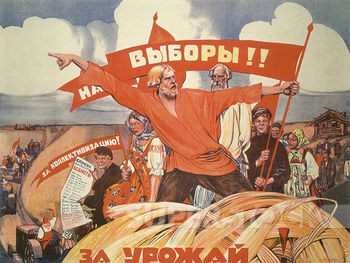Collectivization
- all peasants were to work on collective farms, called Kolkhoz, and all land was pooled together
- Party officials monitored their output
- 62% of all peasants collectivized
- Kulaks, wealthier peasants who owned their own farms
- resist
- emigrate
- Gulags in Siberia - might have been worse then concentration camps
- Seen as a threat to collectivization due to their free enterprise ideals
- majority burned
Summary
Collectivization was the idea of giving everything to the government and then re-distributing it equally to the people. Peasant farmers worked in collective farms called Kolkhoz. Although this may have been beneficial for the lower class, the people of higher class didn't like this idea. Because of this farm owners had to decide if they wanted to give their land to the government, burn their crops, or leave.

